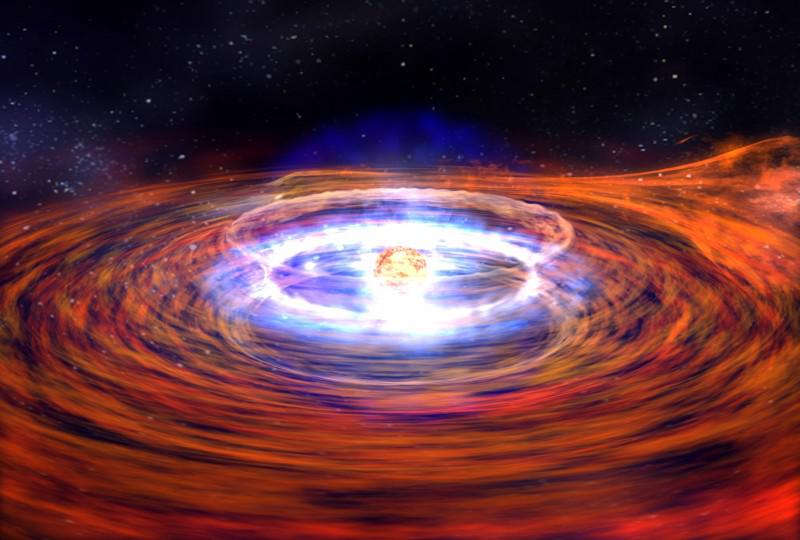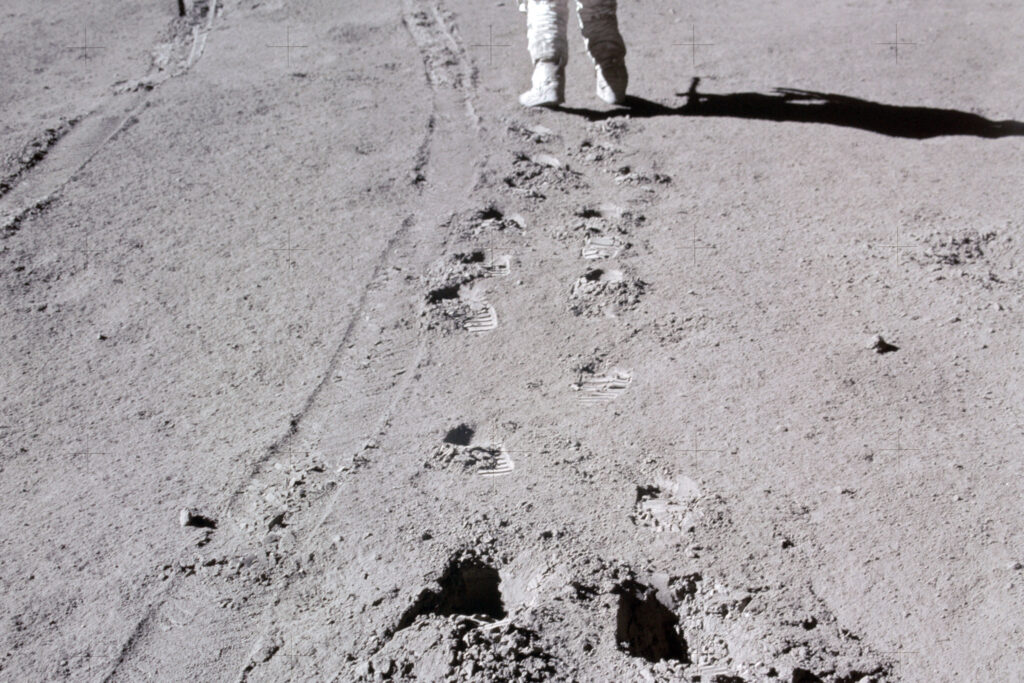
The vastness of space is incredible. The sheer scale of it, as well as the trillions upon trillions of items scattered over the universe’s billions of galaxies, is virtually inconceivable to the human mind.
This page is a living, breathing collection of the most amazing, awe-inspiring, and astonishing facts about space. This is for kids who want to learn more about space, adults who need great information for an article, and even those who just like space facts for no reason.
Unbelievable Space Facts:-
- Although space does not begin at a certain altitude above the Earth, the Representing line of 100 kilometers is a widely accepted concept.
- 45 °C is the temperature in the empty space.
- Space is a hard vacuum, which means it is a void with very little matter in it.
- Because molecules are too far apart to transmit sound, there is no sound in space.
- The gap between galaxies isn’t totally empty; on average, one atom per cubic meter may be found there.
- Our galaxy, the Milky Way, is thought to have between 100 and 400 billion stars.
- The cosmos is estimated to be 13.8 billion years old and has been expanding since its Big Bang birth.
- There are an estimated 2 trillion (2,000,000,000,000) galaxies in the visible cosmos.
- The International Space Station is the world’s biggest crewed spacecraft.
- All of our solar system’s known planets have been visited by spacecraft.
1. There is no sound in the space.

There is no atmosphere or air in space. Sound waves will not be able to travel in a vacuum because there is no medium for them to travel through. That implies, that even if you scream the loudest, no one will hear you yell in space!
While sound waves (mechanical waves) require a medium to move, radio waves (electromagnetic waves) may travel through space without needing to pass through it. Because radio waves can still be broadcast and received in a vacuum environment, astronauts utilize radios to remain in touch while in space.
2. 450° C is the temperature on our sun’s hottest planet.

Venus is the hottest planet in the solar system. The typical surface temperature of this scorching planet is around 232 degrees Fahrenheit (450 degrees Celsius). Mercury, rather than Venus, is the nearest planet to the Sun.
Because Mercury lacks an atmosphere to regulate its temperature, it experiences extreme temperature swings. The atmosphere of Venus, on the other hand, is the thickest of all the planets. Venus is extremely hot because of its atmosphere, which traps heat.
3. There may be life on Mars.

Of all the planets in our solar system (apart from Earth), Mars is the one most likely to be hospitable to life. In 1986, NASA found what they thought may be fossils of microscopic living things in a rock recovered from Mars.
The red planet, Mars, is, by far, the most intriguing candidate. This smaller, colder, and further away relative from Earth had a wet history, with liquid water flowing on the surface for almost a billion years. Circumstantial evidence has pointed to the possibility of life on Mars, not just in the distant past, but also perhaps still alive and active now. There are five different scenarios for life on Mars. So far, here’s what we know.
4. Nobody knows how many stars are in space.

Because of the vastness of space, it is hard to know exactly how many stars we have. Scientists and astronomers now estimate the number of stars exclusively inside our galaxy, the Milky Way.
The number of stars in space is believed to be between 200 and 400 billion, and there are billions of galaxies, therefore the stars in space are truly uncountable.
Stars are not strewn about in space at random; instead, they form huge clusters known as galaxies. The Milky Way is the galaxy in which the Sun is located. The Milky Way alone contains an estimated 100 million stars, according to astronomers. There are also millions upon millions of other galaxies out there!
5. Halley’s Comet won’t orbit past Earth again until 2061.

Discovered in 1705 by Edmond Halley, the famous comet was last seen in 1986 and is only seen once every 75 to 76 years.
Halley’s Comet, also called Comet Halley, was the first comet whose return was predicted and, almost three centuries later, the first to be imaged up close by interplanetary spacecraft.
Edmond Halley, an English astronomer, released the first inventory of the orbits of 24 comets in 1705. Comets seen in 1531, 1607, and 1682 all had remarkably similar orbits, according to his estimates. Halley proposed that they were all part of a single comet that returned every 76 years, and he anticipated that comet’s return in 1758. Halley died in 1742 before his prediction came true, but the comet was discovered late in 1758, crossed perihelion (closest approach to the Sun) in March 1759, and was named after him. Its recurrent returns proved that it was in orbit around the Sun, implying that at least some comets were solar system members.
6. A full NASA space suit costs $12,000,000.

The backpack and control module accounted for around 70% of the entire cost. If we translate the whole sum to today’s prices, it comes to nearly $150 million.
NASA has been reusing spacesuits constructed in 1974 up until today. The first all-female spacewalk was canceled in 2019 due to a lack of spacesuits.
A spacesuit resembles a small spaceship that you wear around your body rather than clothes. It’s pressurized, equipped with life support systems, and it’ll probably look cool. However, if the suit fails, you’re out.
Although no one has ever died as a result of a malfunctioning spacesuit, this does not mean that contemporary versions are flawless. Astronauts have never been totally pleased with the gear they are required to wear during missions, whether it is for launch into space or reentry back to Earth, or for an extravehicular activity (EVA, often known as a spacewalk).
7. Neutron stars can spin 600 times per second.

Neutron stars are the densest and smallest stars in the known cosmos, with a radius of around 10 kilometers (6 miles) and a mass a few times that of the Sun.
They may rotate up to 60 times per second after forming from a core-collapse supernova star explosion, and due to their physics, they have been reported to spin as rapidly as 600-712 times per second.
8. There may be a planet made out of diamonds.

As space facts go, this is pretty impressive. Research by Yale University scientists suggests that a rocky planet called 55 Cancri e. It is twice the size of Earth and has a mass eight times greater. It may have a surface made up of graphite and diamond. It’s 40 light-years away but visible to the naked eye in the constellation of Cancer.
9. The footprints on the Moon will be there for 100 million years.

The Moon has no atmosphere, which means there is no wind to erode the surface and no water to wash the footprints away. This means the footprints of the Apollo astronauts, along with spacecraft prints, rover prints, and discarded material, will be there for millions of years.
The Apollo astronauts’ mark on the moon will not be eroded or washed away since the moon lacks an atmosphere. This implies that their footprints, rover prints, spacecraft prints, and abandoned goods will be maintained for a very long period on the moon.
They won’t be there indefinitely, though. The moon is still a living organism. It is regularly pummeling with “micrometeorites,” implying that erosion is still taking place on the moon, although slowly.
10. There is floating water in space.

Astronomers have discovered a gigantic water vapor cloud roughly 10 billion light-years distant that have 140 trillion times the mass of water in the Earth’s seas, making it the greatest water find ever made.
And a lot of it, to be sure. Quasars are the most powerful known objects in space, with this one putting out 1,000 trillion times the energy of our sun and 65,000 times the Milky Way’s whole mass. The black hole at the heart of the quasar has a mass 20 billion times that of the sun.
11. The Moon was once a piece of the Earth.

The huge impact hypothesis, which is widely accepted by scientists, claims that the moon was formed when an object collided with early Earth. Earth, like the other planets, arose from a smoldering cloud of dust and gas around a newborn sun. The early solar system was a tumultuous place, and many bodies were formed that never progressed to planetary status. One of them might have collided with Earth not long after it was born.
The makeup of the Moon and the Earth is essentially the same. The differences include that the Moon has less iron and fewer lighter elements like hydrogen, which are required for the production of water. Why is this? The massive impact idea explains it. On Earth, the heavy metal iron would have survived. And the heat generated from the collision and ejection into space would have boiled away the lighter components, leaving the rest of the Earth and Theia material to mix.
Theia smashed with Earth, vaporizing portions of the newborn planet’s crust and scattering them into space. The expelled particles were bonded together by gravity, resulting in the biggest moon in the solar system in proportion to its host planet.
12. The Sun’s mass takes up 99.86% of the solar system.

The Sun is three-quarters hydrogen, with helium accounting for the majority of its remaining mass. This yellow star has a mass 330,000 times that of Earth. It is responsible for 99.86% of the mass in our solar system. Jupiter, the gas giant, makes up around two-thirds of the remaining mass.
The Sun is mainly hydrogen and helium, and it emits charged particles known as the solar wind across the Solar System. Solar flares and sunspots are manifestations of the Sun’s powerful magnetic field, which fluctuates on an 11-year cycle.
13. Mercury and Venus are the only planets with no moons.

Because of their near proximity to the Sun, the terrestrial planets Mercury and Venus are unable to support any moons. The Sun’s gravity is substantially greater, and any natural satellite circling these neighboring planets will be dragged by it.
Even if something was left and the moon was formed, Mercury’s ability to keep the moon for an extended period of time is quite doubtful. Remember how we spoke about the hill sphere earlier? Mercury’s hill sphere is around 175,000 km. Even if Mercury had managed to grip a moon within the mountainous sphere, the enormous gravitational attraction produced on it by the Sun, which is incredibly nearby, would have swiftly yanked it away. Mercury’s control over the moon would have been stripped away by this power.
14. The gas giant Jupiter is a failed star.

Jupiter, the solar system’s biggest planet, is made mainly of hydrogen and helium. These are the same components that make up our Sun. Jupiter, on the other hand, is too small to initiate nuclear fusion and create its own energy. It would become a low-mass star if it were around 80 times larger.
Jupiter has a storm called the Great Red Spot, which is a great tidbit to know. For more than a century, it has been whirling.
15. Pluto is now classified as a dwarf planet, not a planet.

Many planet-like objects are being discovered, implying that the number of planets will continue to fluctuate. The International Astronomical Union created a new category called “dwarf planets” as a result of this.
Dwarf planets, like Pluto, are planet-like objects that do not dominate their orbital region.
The primary event of the IAU’s 2006 General Assembly, the proposal to demote Pluto, was also a watershed moment for the rest of the solar system. The resolution that was enacted was fiercely disputed by the members of the union, and it formally defined the term planet. Planets are astronomical objects massive enough to have been rounded by their gravitational orbit around the Sun and to have pushed surrounding planetary objects and debris out of the way.
16. Massive stars end their lives through supernova explosions.

Stars bigger than 5 times the mass of the Sun would burst into supernovae as they approached the end of their stellar lifetimes. A star collapsing into itself or a white dwarf in a binary system causes supernova explosions. Some of these massive explosions also create black holes.
Massive stars like R136a1 can have a big impact on their surroundings. Strong stellar winds are hypothesized to be driven by their high radiation pressures. At speeds of up to 1,864 miles (3,000 kilometers) per second, the winds may disperse around 10 solar masses of material per million years.
17. There are 2,000,000,000,000 galaxies in the observable universe.

We would not be able to observe the entire cosmos since it is so vast. The observable universe is the only part of space that we can see. Despite this, estimations suggest that there are around two trillion or two million galaxies in the visible universe alone.
The number of stars in each of those 2 trillion galaxies is unknown to astronomers. Most are so far away that it’s impossible to tell.
However, we can construct a reasonable estimate of the number of stars in our own Milky Way galaxy. Those stars, too, are different, with a vast range of sizes and hues.
Our Sun, a white star, is a medium-sized, medium-weight, and medium-hot star, with a surface temperature of 27 million degrees Fahrenheit (15 million degrees Celsius).
Bigger, heavier, and hotter stars, such as Vega in the constellation Lyra, tend to be blue. Smaller, lighter, and dimmer stars, such as Proxima Centauri, are generally red. It is the nearest star to us, except the Sun.
18. A rose was brought to space in 1998.

International Flavors & Fragrances (IFF) wanted to investigate if sending a rose into space will result in new fragrances. The rose was on board the space shuttle Discovery. It was tested and utilized to make perfume when it returned to Earth.
The essential oils extracted from flowers planted on the ground provide perfumes, body lotions, and dozens of other personal care goods and flavorings their distinct fragrance.
19. There are more than 4,000 known exoplanets, and counting.

Extrasolar planets are referred to as “exoplanets.” These are planets outside of our solar system. They are available in a variety of sizes and compositions. Planets outside the Milky Way, on the other hand, are known as extragalactic planets.
The official list of known exoplanets surpassed 4000 on June 13, 2019! To commemorate their achievements, we’ve animated their findings through time and turned them into music. As each exoplanet is discovered, a circle emerges at its location, with a color indicating the technique used to locate it (see below). The size of the circle represents the relative size of the planet’s orbit, while the pitch of the note represents the planet’s relative orbital period. Planets having longer orbital periods (lower orbital frequencies) sound lower, whereas planets with shorter orbital periods (higher orbital frequencies) sound higher.
20. Most galaxies have a central black hole.

While the exact nature of black holes is unknown, scientists have discovered that they are typically 1/1000th the mass of their host galaxy. The mass of the Milky Way’s central black hole, for example, is 4.6 million times that of the Sun.
To grasp this concept, we must return to the epoch of the earliest galaxies, when the universe was roughly 100 million years old. They were significantly smaller than today’s galaxies, with a mass of 10,000 to 100,000 times that of the Milky Way. The earliest stars to perish in these early galaxies formed black holes with masses of tens to thousands of times that of the Sun. These black holes sunk to the galaxy’s center of gravity, the nucleus. Because galaxies grow by merging and colliding with one another, collisions between galaxies will produce supermassive black hole pairs, which are the central plot point of this novel. After then, the black holes collide and expand in size.



